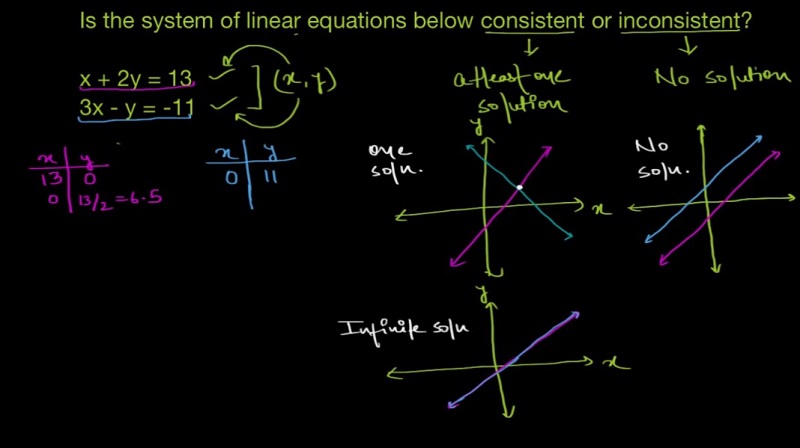What is the System of equations?
3 min read
System of equations is a collection of two or more equations that have a common set of unknowns. A system of equations may consist of two or more equations with the same unknowns. Simultaneous equations are also known as systems of equations.
This system of equations is handy while deciding better loan plans, mobile internet plans, better-paying jobs, etc. Let me show it with an example. An employer is paying 10K for an 8hrs job and another employer is paying 12K for 12 hrs for the same job. By using system of equations, we have 10K = 8hrs so, (x)K = 12 Hrs x = [(12x10K) / 8] = 15K. So, the first employer will pay 15K for 12hrs work. Hence the first employer is paying better for the work than the second employer. Let us now discuss in detail the system of equations.
Solutions of System of Equations
Solving a system of equations means finding all solutions to the equations of the system or reducing each equation into a true statement. There are two types of solutions for systems of equations. Namely, Consistent system in which the system of equations has at least one solution. Unique solutions that have one and only one solution for the system of equations.
Possible Solutions for a System of Equations
For a given system of equations,
- You may have a unique solution.
- You may have no solutions. In this case, we call that the system of equations is inconsistent.
- There may be several sets of solutions, but the total number of solutions is not infinite. The number of solutions is said to be finite. This can happen when one or more variables in an equation have power other than one and/or one of the equations contains a product of variables.
- You may have an infinite number of solutions to the system of equations. In this case, the system is said to be indeterminate.
Methods of Finding Solutions to the System of Equations
The following methods can be used to find the set of solutions for the system of equations.
Substitution Method
- Solve for one of the variables in terms of the remaining variables using one of the equations.
- Substitute the result in the following equations.
- If only one equation in one variable is found, solve it. Otherwise, repeat steps until you only have one equation with one variable.
- Using back-substitution, determine the values of the remaining variables.
- Verify the solution you’ve discovered.
Elimination Method
Rearrange both equations if necessary, so that the x-terms come first, then the y-terms, the equals sign, then the constant term. If an equation does not appear to have a constant term, the constant term is 0. Eg: 5x + y = 7 and 3x + 5y = 0.
Multiply one (or both) equations by a constant that allows the x or y terms to cancel out when the equations are added or subtracted. Then find the value of any one variable.
5x + y = 7 (1)
3x + 5y = 0 (2)
Multiply equation 1 by 5 subtract to cancel the y term
25x + 5y = 35 (1)
3x + 5y = 0 (2)
Subtract to cancel the y term
22x =35
x = 35/22.
By substituting this value in any one equation, calculate the value of the y (or the other) variable now.
3(35/22) + 5y = 0
5y = – 4.77
y = 0.95
Graphical Method
- In each equation, solve for y.
- Both equations should be graphed in the same Cartesian coordinate system.
- Find the point of intersection of the two lines.
- The coordinate values of this point of intersection are the solutions for the system of equations.
This is all about the system of solutions. To solve some examples of these equations using various methods one must attend math classes. Math classes help you correlate the concept with practical examples. I recommend Cuemath classes for better understanding. For more details about math classes log on to the Cuemath website.





